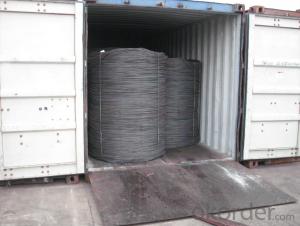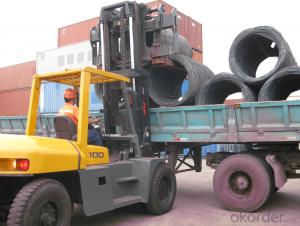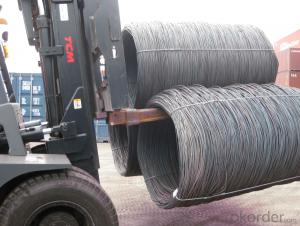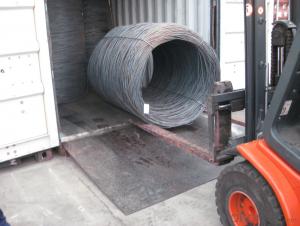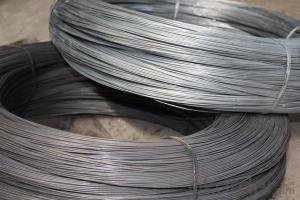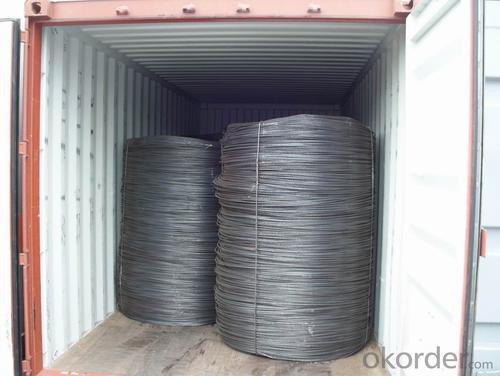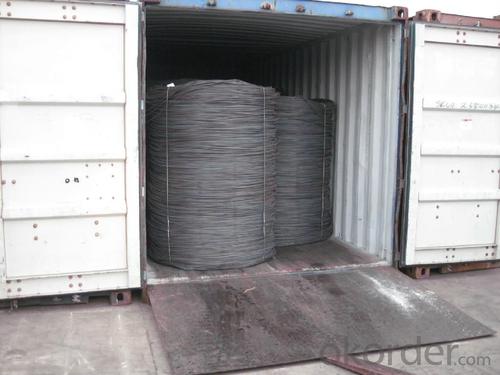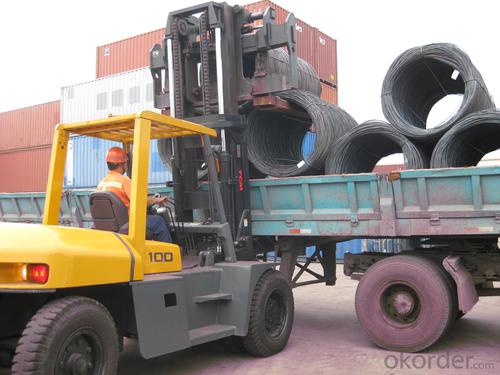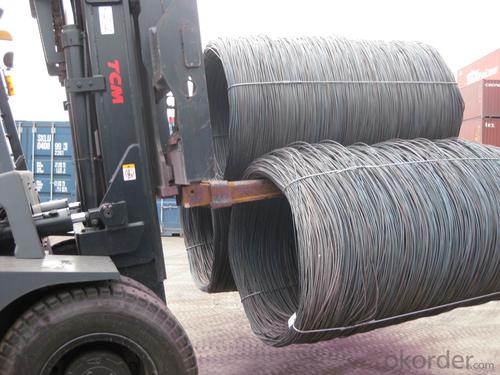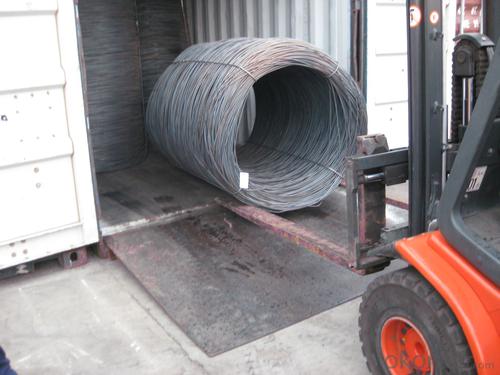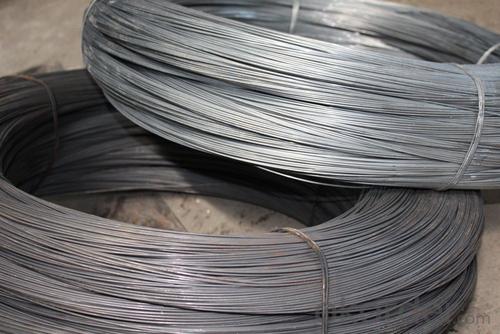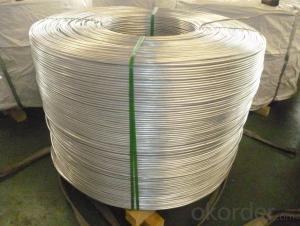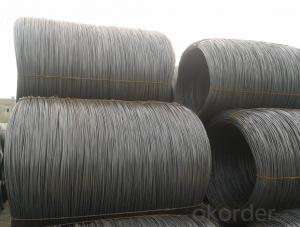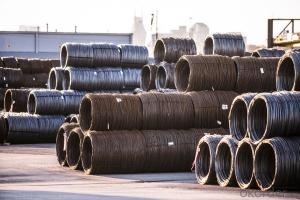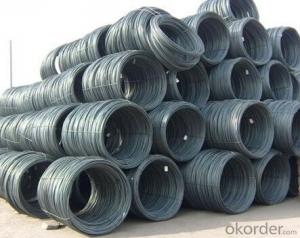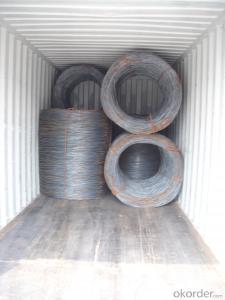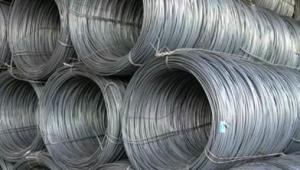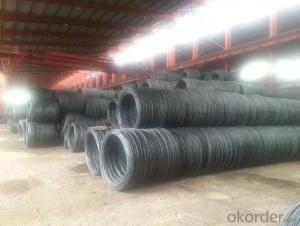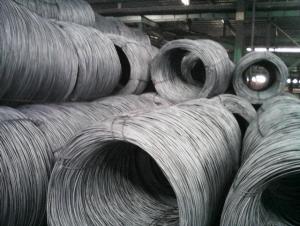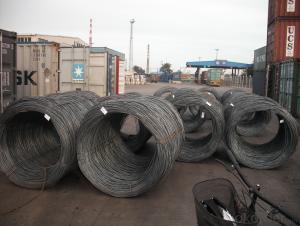SAE1006Cr Carbon Steel Wire Rod 9.5mm for Welding
- Loading Port:
- Shanghai
- Payment Terms:
- TT OR LC
- Min Order Qty:
- 100 m.t
- Supply Capability:
- 30000 m.t/month
OKorder Service Pledge
OKorder Financial Service
You Might Also Like
Specification
Description of SAE1006Cr Carbon Steel Wire Rod 9.5mm for Welding:
OKorder is offering Color Coated Steel Coil Prepainted Steel Coil at great prices with worldwide shipping. Our supplier is a world-class manufacturer of steel, with our products utilized the world over. OKorder annually supplies products to European, North American and Asian markets. We provide quotations within 24 hours of receiving an inquiry and guarantee competitive prices.
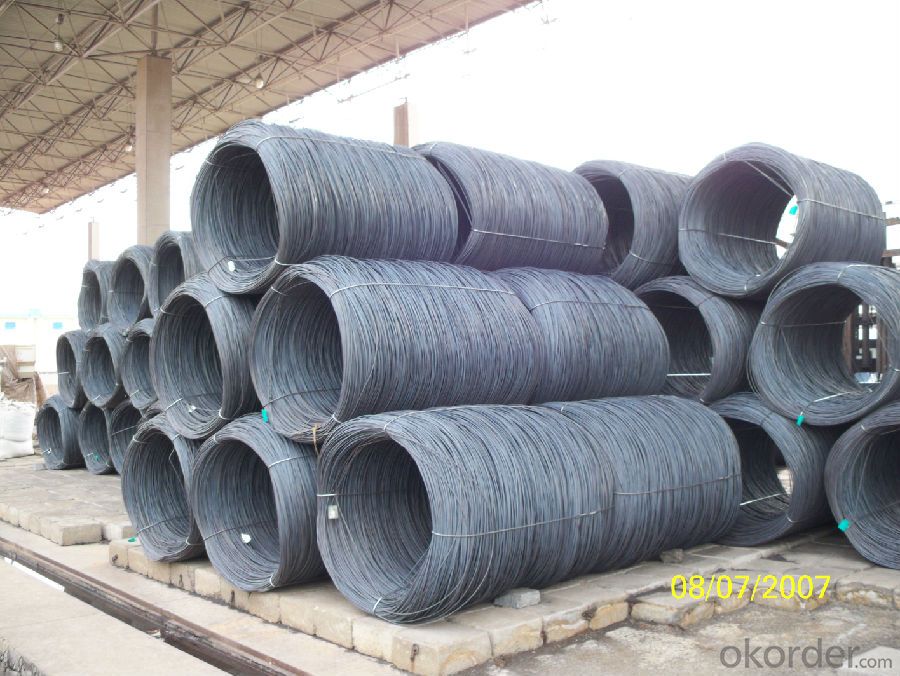
Applications of SAE1006Cr Carbon Steel Wire Rod 9.5mm for Welding:
Color Coated Steel Coil Prepainted Steel Coil are ideal for structural applications and are widely used in the construction of buildings and bridges, and the manufacturing, petrochemical, and transportation industries.
Main Product Features of SAE1006Cr Carbon Steel Wire Rod 9.5mm for Welding:
· Premium quality
· Prompt delivery & seaworthy packing (30 days after receiving deposit)
· Corrosion resistance
· Can be recycled and reused
· Mill test certification
· Professional Service
· Competitive pricing
Specifications of SAE1006Cr Carbon Steel Wire Rod 9.5mm for Welding:
PPGI:
1, Introduction: Color coated steel coils(sheets), i. E. PPGI, also called prepainted steel coils(sheets), are made of galvanized steel coils(sheets) with polymer coatings as surface. It's a new enclosure material and building board with characteristics of light-weighted, heat preserved&insulated, easily installed with bright colors.
2, Production Process: Pretreatment(Degreasing)_Drying_Chromating_Paint Basic Oil_Cooling_Drying_Color Coating_Cooling_Film-covering_Rolling Up
3, Characteristics:
Good at corrosion resistence. Besides zinc coating of the basic plate of galvanized steel sheet, the color coating as the surface has double lifetime to ensure better anticorrosion effect.
With excellent cold bending molded manufacturablity, PPGI products can be processed or directly used as final product. As being light-weighted and conveniently transported, they're widly used to replace wood to save energy.
4.There're thousands of colors can be chosen as per different application. Any color plays well in decoration.
No pollution with high recycling rate, PPGI coils and sheets are strongly recommended as enviroment-friendly products by the government.
5, eye bands and 4 circumferential bands in steel, galvanized metal fluted rings on inner and outer edges, galvanized.
| commodity | SAE1006Cr Carbon Steel Wire Rod 9.5mm for Welding |
| Techinical Standard: | JIS G3302-1998, EN10142/10137, ASTM A755 |
| grade | Q195,Q215,Q235,SAE1006,SAE1008 SAE1006Cr |
| Types: | Mesh welding |
| Base metal | galvanized, galvalume, cold rolled steel |
| Thickness | 0.14-1.0mm(0.16-0.8mm is the most advantage thickness) |
| Width | 610/724/820/914/1000/1200/1219/1220/1250mm |
| Type of coating: | PE, SMP, PVDF |
| Zinc coating | Z60-150g/m2 or AZ40-100g/m2 |
| Top painting: | 5 mic. Primer + 15 mc. R. M. P. |
| Back painting: | 5-7 mic. EP |
| Color: | According to RAL standard |
| ID coil | 508mm610mm |
| Coil weight: | 2--3MT |
| Package: | Properly packed for ocean freight exportation in 20'containers |
| Application: | Industrial panels, roofing and siding for painting/automobile |
| Price terms | FOB, CFR, CIF |
| Payment terms | 20%TT in advance+80% TT or irrevocable 80%L/C at sight |
| delivery time | 25 days after recepit of 20% TT |
| Remarks | Insurance is all risks |
| MTC 3.1 will be handed on with shipping documents | |
| We accept SGS certificatation test |
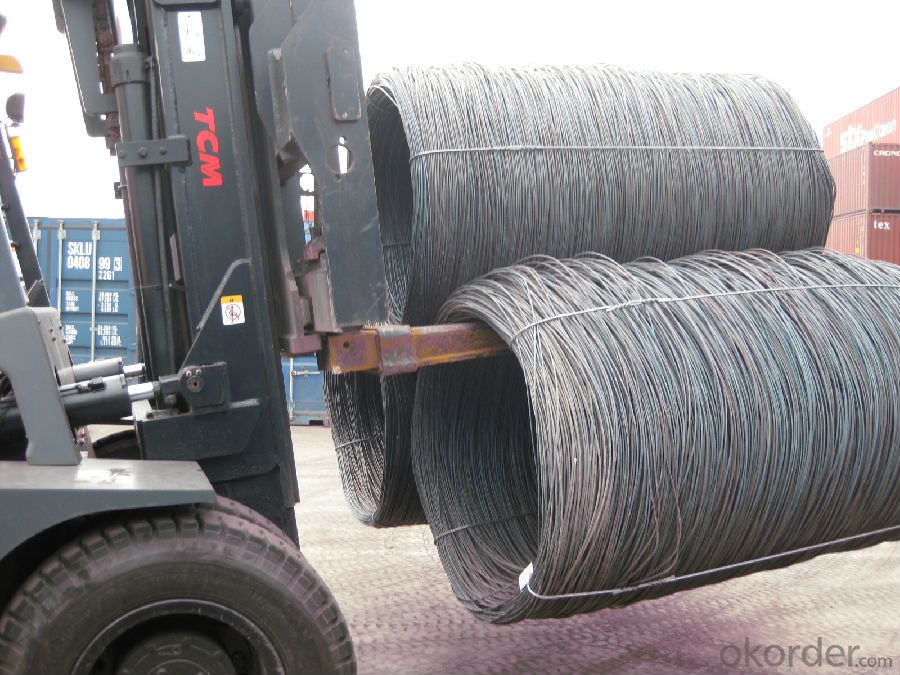
FAQ of SAE1006Cr Carbon Steel Wire Rod 9.5mm for Welding:
Q1: Why buy Materials & Equipment from OKorder.com?
A1: All products offered byOKorder.com are carefully selected from China's most reliable manufacturing enterprises. Through its ISO certifications, OKorder.com adheres to the highest standards and a commitment to supply chain safety and customer satisfaction.
Q2: How do we guarantee the quality of our products?
A2: We have established an advanced quality management system which conducts strict quality tests at every step, from raw materials to the final product. At the same time, we provide extensive follow-up service assurances as required.
Q3: How soon can we receive the product after purchase?
A3: Within three days of placing an order, we will begin production. The specific shipping date is dependent upon international and government factors, but is typically 7 to 10 workdays.
Q4: What makes stainless steel stainless?
A4: Stainless steel must contain at least 10.5 % chromium. It is this element that reacts with the oxygen in the air to form a complex chrome-oxide surface layer that is invisible but strong enough to prevent further oxygen from "staining" (rusting) the surface. Higher levels of chromium and the addition of other alloying elements such as nickel and molybdenum enhance this surface layer and improve the corrosion resistance of the stainless material.
Q5: Can stainless steel rust?
A5: Stainless does not "rust" as you think of regular steel rusting with a red oxide on the surface that flakes off. If you see red rust it is probably due to some iron particles that have contaminated the surface of the stainless steel and it is these iron particles that are rusting. Look at the source of the rusting and see if you can remove it from the surface.
- Q: What are the common standards and certifications for steel wire rod?
- There are several common standards and certifications for steel wire rod that ensure its quality and compliance with industry regulations. Some of the most widely recognized standards and certifications include: 1. ASTM International Standards: ASTM A510 and ASTM A853 are commonly used standards for steel wire rod. These standards outline the requirements for carbon steel wire rods used in a variety of applications, including manufacturing of wire products, nails, and fencing. 2. ISO Certification: ISO 9001 is a widely recognized quality management system standard that ensures consistent quality and customer satisfaction. Many steel wire rod manufacturers obtain ISO 9001 certification, indicating their adherence to stringent quality control processes. 3. European Standards (EN): For wire rod manufactured and used within the European Union, EN 10016-2 is a standard that specifies the technical delivery conditions for non-alloy steel wire rod for general purposes. 4. American Petroleum Institute (API) Certification: API Spec 5L is a certification specifically applicable to steel wire rod used in the oil and gas industry. This certification ensures that the wire rod meets the necessary requirements for use in pipelines and related applications. 5. International Electrotechnical Commission (IEC) Standards: IEC 60949 is a standard that specifies the requirements for copper or aluminum wire rod used in electrical purposes. Although not specifically for steel wire rod, IEC standards are followed in the electrical industry to ensure safety and performance. It is important to note that different applications may have specific requirements, and manufacturers often comply with additional industry-specific certifications or customer-specific standards. These certifications and standards play a crucial role in maintaining consistent quality, safety, and performance of steel wire rod in various industries.
- Q: What are the different surface inspection methods for steel wire rod?
- There are several different surface inspection methods that can be used for steel wire rod. These methods are employed to ensure the quality and integrity of the surface of the wire rod. 1. Visual Inspection: This is the simplest and most basic method of surface inspection. It involves visually inspecting the surface of the wire rod for any visible defects such as scratches, dents, or corrosion. 2. Magnetic Particle Inspection: This method involves applying a magnetic field to the wire rod and then applying a magnetic particle solution on the surface. Any defects or cracks in the surface will cause the particles to cluster and become visible under UV light. 3. Eddy Current Testing: This non-destructive testing method involves inducing an electric current in the wire rod and measuring the resulting electromagnetic field. Any variations or anomalies in the electromagnetic field can indicate surface defects. 4. Ultrasonic Testing: This method uses high-frequency sound waves to penetrate the surface of the wire rod. The sound waves are reflected back when they encounter any surface defects or cracks, allowing for their detection. 5. Dye Penetrant Inspection: This method involves applying a liquid dye to the surface of the wire rod. The dye is then allowed to seep into any surface defects or cracks. After a certain period of time, the excess dye is removed, and a developer is applied to make the defects visible. 6. Laser Scanning: This advanced method utilizes laser technology to scan the surface of the wire rod. The laser detects any deviations from the normal surface profile, such as dents or scratches, and provides a detailed analysis of the surface condition. 7. X-ray Inspection: This method is used to inspect the internal and external surface of the wire rod. X-rays are passed through the wire rod, and any defects or anomalies are detected by the variations in the intensity of the X-ray beam. Each of these surface inspection methods has its own advantages and limitations. The choice of method depends on the specific requirements, the type of defects to be detected, and the level of accuracy needed for the inspection.
- Q: What are the common handling methods for steel wire rod?
- The common handling methods for steel wire rod include using cranes or forklifts to lift and transport the rods, storing them in racks or on pallets, and using wire rod coils or spools for easier handling and transportation.
- Q: How is steel wire rod used in the construction of bridges?
- Steel wire rod is commonly used in the construction of bridges as it provides strength, durability, and flexibility. It is primarily used for reinforcing concrete structures, such as bridge decks and foundations, to enhance their load-carrying capacity and structural integrity. Additionally, steel wire rod is also utilized for suspension cables and stay cables in cable-stayed bridges, offering high tensile strength to support the bridge structure efficiently. Overall, steel wire rod plays a crucial role in ensuring the safety and longevity of bridges by reinforcing and providing structural support.
- Q: How is steel wire rod used in the manufacturing of wire forms for recreational equipment?
- Steel wire rod is used in the manufacturing of wire forms for recreational equipment as it provides strength and durability. It is commonly used to create various wire components like hooks, springs, and frames that are essential for recreational equipment such as playground equipment, sporting goods, and camping gear. The flexibility and resilience of steel wire rod make it suitable for shaping into different forms, ensuring the safety and functionality of the equipment.
- Q: What are the dimensions and tolerances of steel wire rod?
- The dimensions and tolerances of steel wire rod can vary depending on the specific requirements of the application and the manufacturing standards being followed. Generally, steel wire rod is available in various diameters, ranging from a few millimeters to several centimeters. Tolerances in terms of diameter, shape, and surface finish are typically specified by industry standards to ensure consistent quality and performance.
- Q: What are the common applications of half-hard steel wire rod?
- Half-hard steel wire rod is commonly used in various applications due to its specific properties and characteristics. Some of the common applications of half-hard steel wire rod include: 1. Wire forming: Half-hard steel wire rod is widely used in wire forming processes, such as bending, twisting, and shaping into different forms and sizes. It can be used to create wire-based products like springs, clips, hooks, and fasteners. 2. Construction industry: Half-hard steel wire rod is used in the construction industry for reinforcing concrete structures. It is often used as reinforcement in concrete slabs, walls, beams, and columns, providing tensile strength and stability to the structure. 3. Automotive industry: Half-hard steel wire rod is utilized in the automotive industry for various purposes. It is commonly used in manufacturing automotive springs, including suspension springs, seat springs, and valve springs. The high strength and resilience of half-hard steel wire rod make it ideal for these applications. 4. Manufacturing of wire products: Half-hard steel wire rod is used in the manufacturing of a wide range of wire products. It is commonly used in the production of wire mesh, wire ropes, cables, fencing, and wire-based filters. The half-hardness of the steel wire rod allows for the desired flexibility and strength required for these applications. 5. Electrical and electronic industry: Half-hard steel wire rod is used in the electrical and electronic industry for various purposes. It is commonly used in the production of electrical and communication cables, providing strength and durability to the cables. It is also used in the manufacturing of electronic components and connectors. 6. Jewelry making: Half-hard steel wire rod is sometimes used in jewelry making, especially for creating wire-based jewelry designs. It can be shaped into various forms, such as rings, bracelets, and pendants, and its half-hardness allows for the desired level of flexibility and durability. Overall, half-hard steel wire rod finds its applications in various industries and sectors due to its strength, malleability, and usability in wire-based products and structures.
- Q: How is the steel wire rod market expected to grow in the future?
- The steel wire rod market is expected to grow significantly in the future due to several key factors. Firstly, the increasing demand for steel wire rods in various industries such as construction, automotive, and manufacturing is expected to drive market growth. Steel wire rods are essential for applications such as reinforcement in concrete structures, wire mesh for fencing, and manufacturing of automobile parts. Additionally, the rising urbanization and industrialization in developing economies are likely to fuel the demand for steel wire rods. As these countries continue to invest in infrastructure development and construction projects, the need for steel wire rods will grow substantially. Moreover, the automotive industry's shift towards electric vehicles and lightweight materials is expected to further boost the demand for steel wire rods as they are crucial for producing lightweight yet strong components. Furthermore, advancements in technology and innovation in steel manufacturing processes are anticipated to positively impact the market growth. These advancements allow for the production of high-quality steel wire rods that meet the specific requirements of various industries. Additionally, the implementation of stringent safety and quality standards by regulatory bodies is expected to drive the demand for premium-grade steel wire rods. Moreover, the growing focus on sustainable and eco-friendly construction practices is likely to contribute to market growth. Steel wire rods are recyclable, making them a preferred choice in environmentally conscious projects. Furthermore, the increasing adoption of steel wire rods in the renewable energy sector, particularly wind energy, is expected to create new growth opportunities for the market. In conclusion, the steel wire rod market is expected to witness significant growth in the future, driven by increasing demand from various industries, urbanization, technological advancements, and the focus on sustainable practices.
- Q: What are the common types of steel used for wire rod production?
- The common types of steel used for wire rod production include low carbon steel, high carbon steel, and alloy steel.
- Q: What is the composition of a steel wire rod?
- A steel wire rod is primarily composed of iron, with additional elements such as carbon, manganese, silicon, and sometimes small amounts of other elements to improve its strength and other properties.
Send your message to us
SAE1006Cr Carbon Steel Wire Rod 9.5mm for Welding
- Loading Port:
- Shanghai
- Payment Terms:
- TT OR LC
- Min Order Qty:
- 100 m.t
- Supply Capability:
- 30000 m.t/month
OKorder Service Pledge
OKorder Financial Service
Similar products
Hot products
Hot Searches
Related keywords

